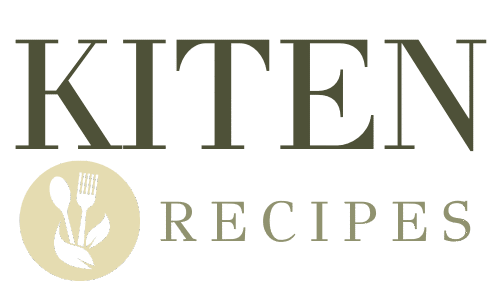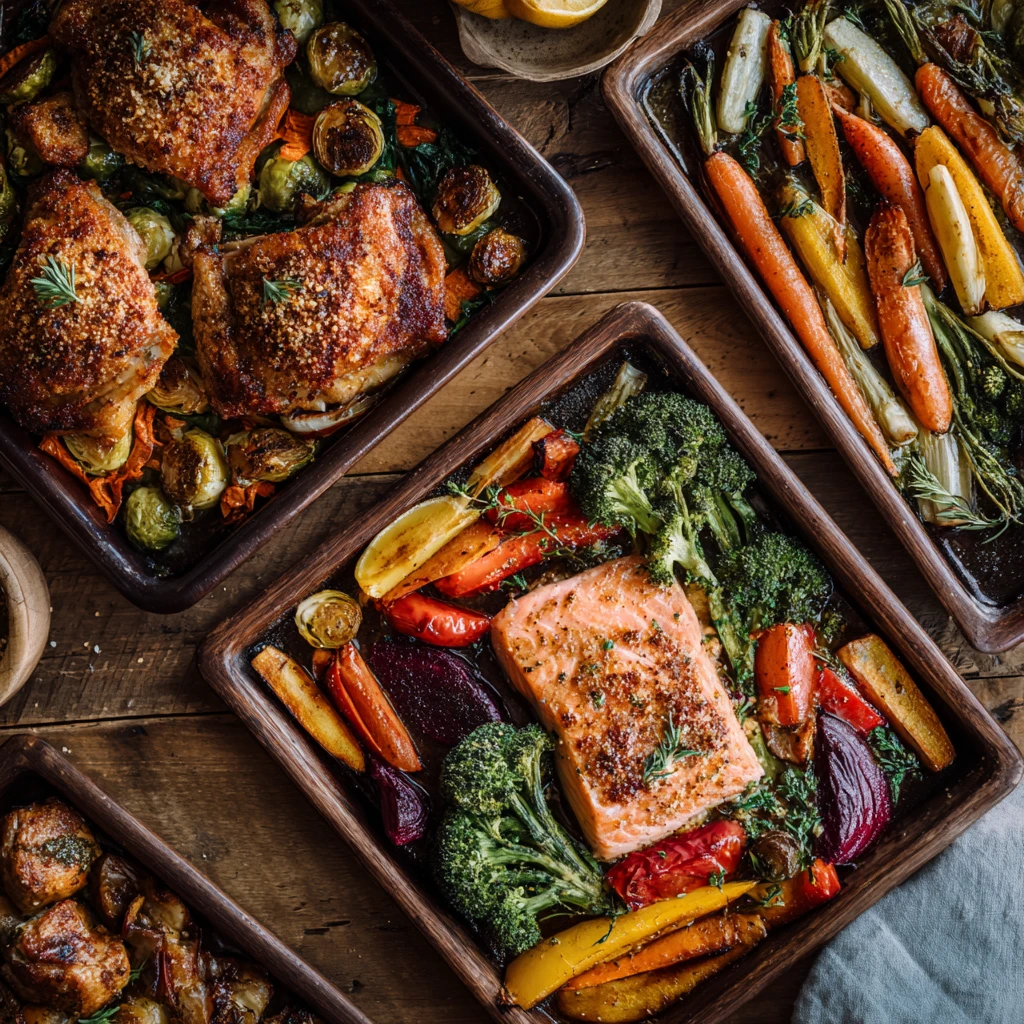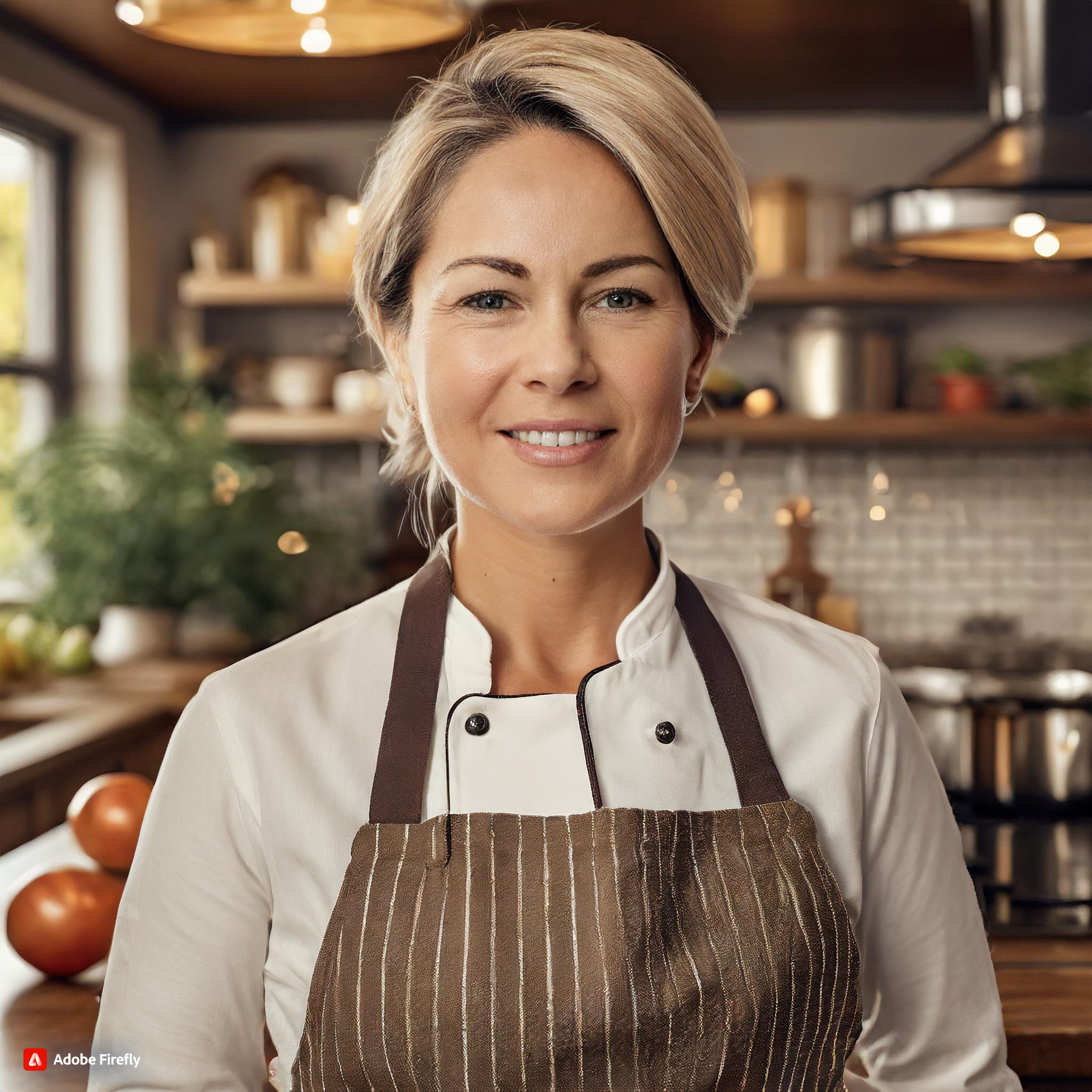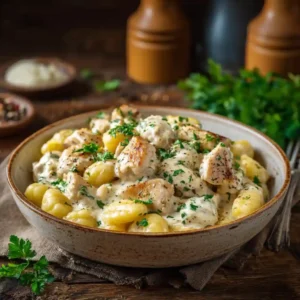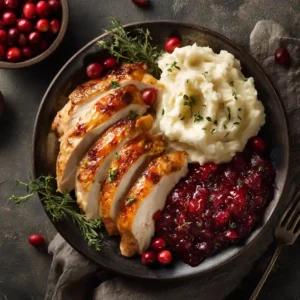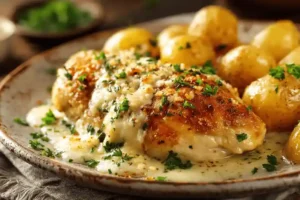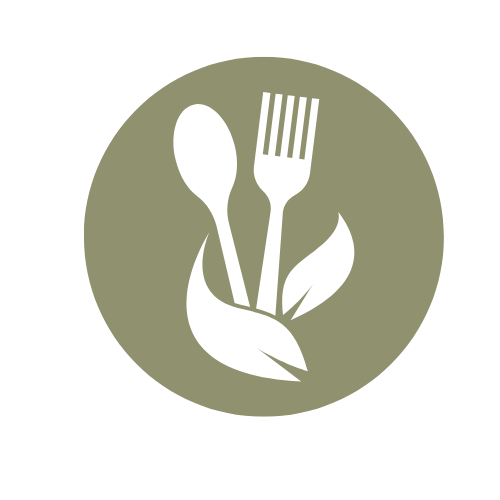Table of Contents
Table of Contents
When weeknights get hectic, sheet pan meals come to the rescue. These all-in-one dinners bring together meat, vegetables, and seasonings on a single tray. You prep once, roast everything together, and enjoy a flavorful dinner with almost no cleanup. What makes sheet pan meals special isn’t just how easy they are it’s how reliably delicious they turn out. Whether you’re a new cook or a seasoned home chef, this method delivers. In this guide, I’ll show you why these meals are a go-to in my kitchen, how to build the perfect tray, and a few creative spins to keep things interesting.
Why Sheet Pan Meals Changed the Way I Cook
From Kitchen Chaos to Sheet Pan Simplicity
I still remember the first night I gave sheet pan meals a try. It was one of those evenings where I didn’t want to think, let alone cook. I had some chicken thighs, baby potatoes, and green beans in the fridge. Without much thought, I tossed them with olive oil and garlic, spread everything on a tray, and slid it into the oven.
Thirty minutes later, I had a full dinner golden, tender, and packed with flavor. And cleanup? Just one pan to wash. That simple success completely shifted how I cook on weeknights.
Since then, the sheet pan has become my go-to kitchen tool. Whether I’m roasting garlic honey chicken like in this recipe, prepping veggie bowls, or building wraps, I start with a tray and keep it simple.
Sheet pan meals make the entire process calmer. No juggling skillets. No stovetop splatter. Just one pan in the oven and the peace of knowing dinner is taken care of.
Why Sheet Pan Meals Just Work
Here’s why this method is so effective: roasting. It deepens flavor, crisps up edges, and brings out the natural sweetness in vegetables all without needing extra pans or steps.
One of my favorites is a taco-style dinner like in this fish taco bowl. You roast fish, onions, and peppers all on one tray, then serve with warm tortillas or rice. Easy, fresh, and bold.
I also love transforming everyday dinners, like this ground beef cottage cheese bowl, into a roastable version. Cook the beef and veggies together on a sheet, and dinner’s done with less cleanup.
That’s the heart of sheet pan meals: efficiency and flavor working side by side. You can double the batch, save time, and eat better with fewer dishes to scrub.
Even if you’re new to the kitchen, this method builds confidence fast. It’s hard to mess up, and easy to make your own. That’s why I keep coming back to it and why it’s become a staple in so many kitchens.
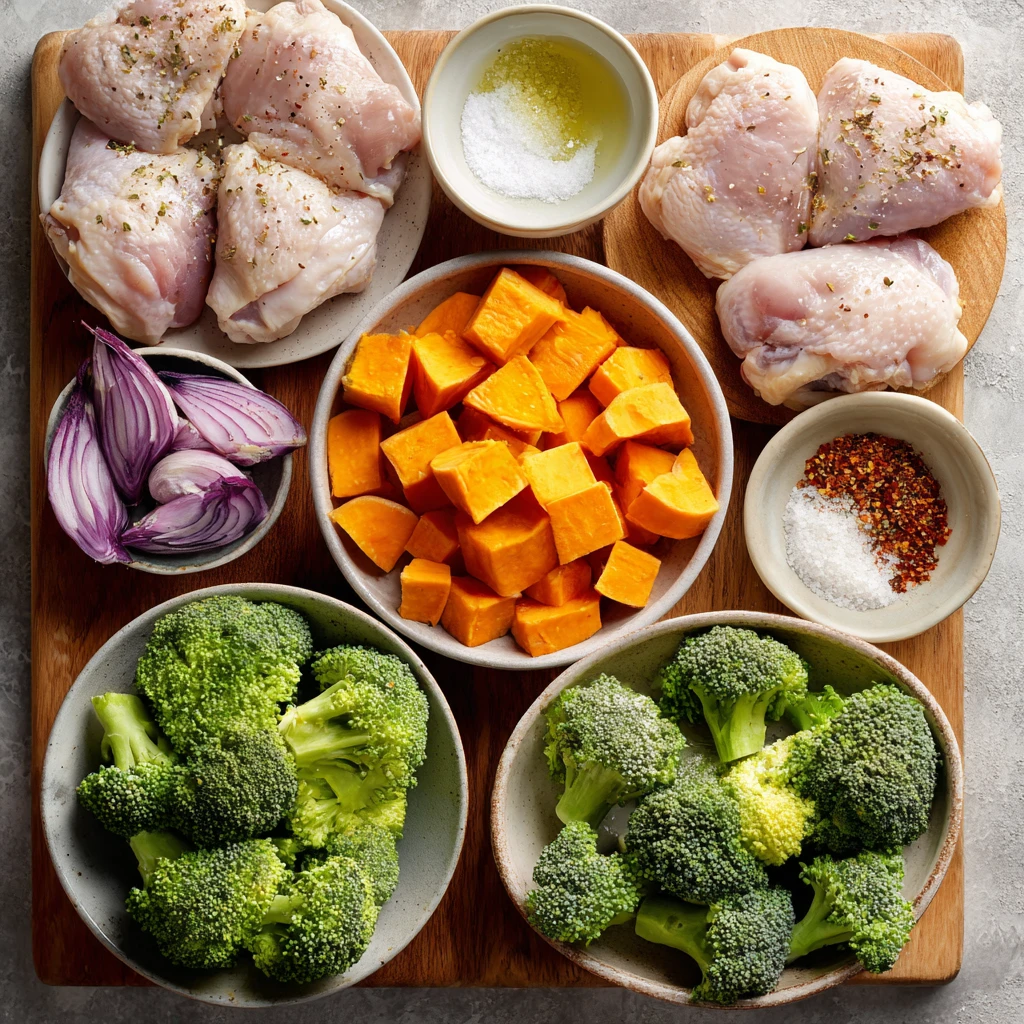
How to Make the Perfect Sheet Pan Meal Every Time
Choosing the Right Pan Size and Type
The pan you choose can make or break your sheet pan meals. A high-quality, rimmed baking sheet is essential—it holds juices, prevents spills, and encourages even roasting. A half-sheet pan (about 18×13 inches) is ideal for most recipes. It’s large enough to give ingredients space, which means crisp edges and fewer soggy bites.
Overcrowding is the most common mistake. When food overlaps or touches too much, it steams instead of roasts. For perfect texture, spread your ingredients out in a single layer. If you’re feeding more people, use two pans or stagger the cook time.
Dark-colored pans cook faster and can brown food more aggressively, while light-colored aluminum pans roast more gently. Either works, but adjust your cooking time if switching between them.
Parchment paper can be helpful for easy cleanup, especially with sticky sauces. But skip the foil—it reflects heat differently and can cause uneven cooking. If you’re using a nonstick pan, avoid high broil settings to protect the coating.
For lighter meals like our mashed potato puffs recipe, a quarter sheet pan works well, especially when cooking small batches or side dishes.
Cooking Times, Oven Temps, and Flavor Balancing
Knowing what goes on the pan—and when—is the key to making sheet pan meals that turn out every time. Different ingredients cook at different rates. Potatoes take longer than bell peppers, and chicken thighs need more time than shrimp. To avoid overcooked or undercooked elements, stagger your ingredients.
Start by roasting sturdy vegetables like carrots or sweet potatoes for 10–15 minutes. Then add faster-cooking items like broccoli, tomatoes, or fish. A good baseline temperature is 400°F—it gives you crisp, caramelized results without drying out your protein.
Marinating or seasoning ingredients before roasting builds layered flavor. You can toss everything in a bowl with olive oil, salt, pepper, and spices—or try something more creative like a garlic-lemon blend or soy-ginger glaze.
Sheet pan meals are also great for experimenting. For instance, try pairing protein with unexpected veggie sides. Roasted salmon and asparagus, like in this recipe, is a quick and healthy option. You could also try combining root vegetables with herbs and baked tofu for a plant-based twist.
Meal planning? Roast double portions. Leftovers reheat beautifully and can be turned into wraps, grain bowls, or breakfast scrambles. That’s how sheet pan meals save both time and money, especially if you’re feeding a family.
If you’re looking to keep things exciting, check out our cozy one-pot creamy corn pasta—while not a tray meal, the same flavor-forward, simple prep approach applies.
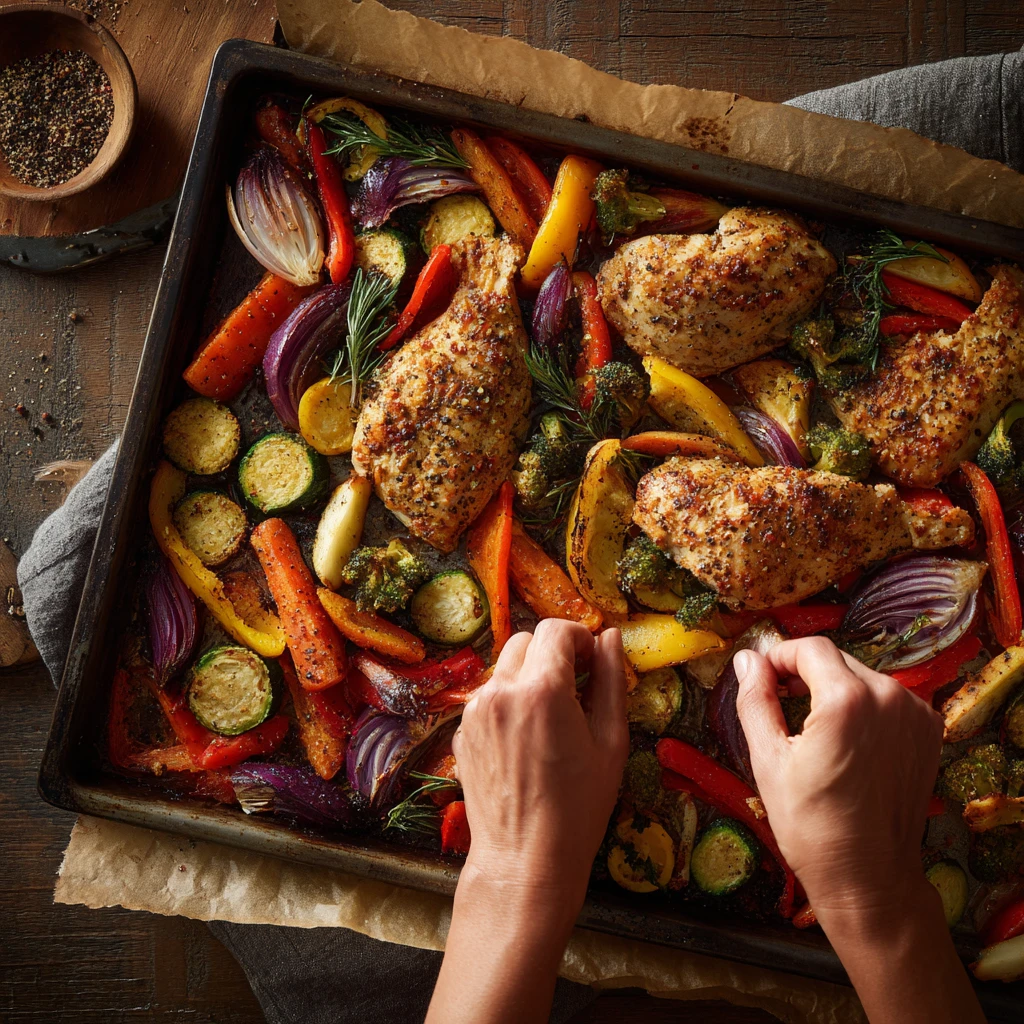
Favorite Sheet Pan Meals That Never Fail
Family Favorites (Protein + Veg + Sauce Combos)
Once you’ve got the hang of the basics, it’s easy to build your own sheet pan meals from just a few ingredients. Start with a protein, add a vegetable, then finish with seasoning or a simple sauce. It’s a formula that works every time.
For a comforting dinner, chicken thighs with red onion, carrots, and a balsamic glaze are hard to beat. You can also pair sausage with bell peppers and sweet potatoes for a smoky, slightly sweet combination that’s always a hit—especially with kids.
One of my most reliable go-tos is a sheet pan version of our breakfast burrito recipe. Roast chopped potatoes, peppers, and scrambled tofu or eggs, then serve wrapped in a tortilla. It’s easy, satisfying, and ideal for prepping ahead.
Sheet pan meals make dinner feel less like a task and more like an opportunity to get creative. They allow you to mix and match what you already have in the fridge. Leftover broccoli? Great. A couple of chicken breasts? Slice them thin and toss them in. Add olive oil, garlic powder, salt, and roast.
Weeknight Wins: Healthy, Fast, and Budget-Friendly
If your goal is to eat healthy without spending hours in the kitchen, sheet pan meals are a game-changer. You control the ingredients, skip the processed sauces, and pack in the vegetables.
Try a salmon and veggie combo with lemon and dill, or tofu with sesame oil and edamame. You can even transform something like our high-protein pudding into a light dessert after a veggie-rich tray dinner.
For plant-based eaters, roasted cauliflower, chickpeas, and tahini dressing is an excellent option. Or go full comfort with ideas from our vegan southern comfort post—many of those flavors adapt beautifully to roasting.
Sheet pan meals don’t have to be fancy. They just have to work—and taste good.
Mastering Sheet Pan Meals Like a Pro
FAQs Answered: Function, Ease, Time & More
What is the function of a sheet pan in cooking?
A sheet pan is your best friend when it comes to roasting. It provides a flat, open surface with enough room to cook multiple ingredients at once. The rimmed edges keep juices from spilling over, allowing for safe and even cooking. This makes sheet pan meals ideal for fast weeknight dinners.
Why is a sheet pan the secret to easier meals?
Because everything goes on one tray. There’s no need to boil, sauté, or juggle pans. Just prep, arrange, and roast. For instance, our chicken tortilla soup uses layers of flavor—but with sheet pan meals, you can build layers by simply combining the right ingredients and roasting them together.
How long do you cook a sheet pan meal?
It depends on your ingredients. Most recipes roast at 400°F for 20 to 35 minutes. Heartier vegetables and proteins like chicken may need 35–40 minutes, while fish and softer veggies cook faster.
What size pan should you use?
A half-sheet pan (18×13 inches) is the gold standard. It gives enough room to space ingredients and avoid steaming. If you’re cooking for one or two, a quarter sheet pan can work just fine.
More Sheet Pan Recipes You’ll Want on Repeat
Beyond the basics, there are endless ways to enjoy sheet pan meals. Try sheet-roasted shrimp and asparagus tossed in garlic butter, or sweet potatoes with black beans, corn, and cumin.
If you’re looking for more cozy, easy ideas, don’t miss our easy lasagna soup—while not roasted, its set-it-and-forget-it style matches the vibe. And for leftovers? Avocado shrimp salad is a fresh way to repurpose roasted proteins.
The best thing about sheet pan meals? They grow with your kitchen confidence.
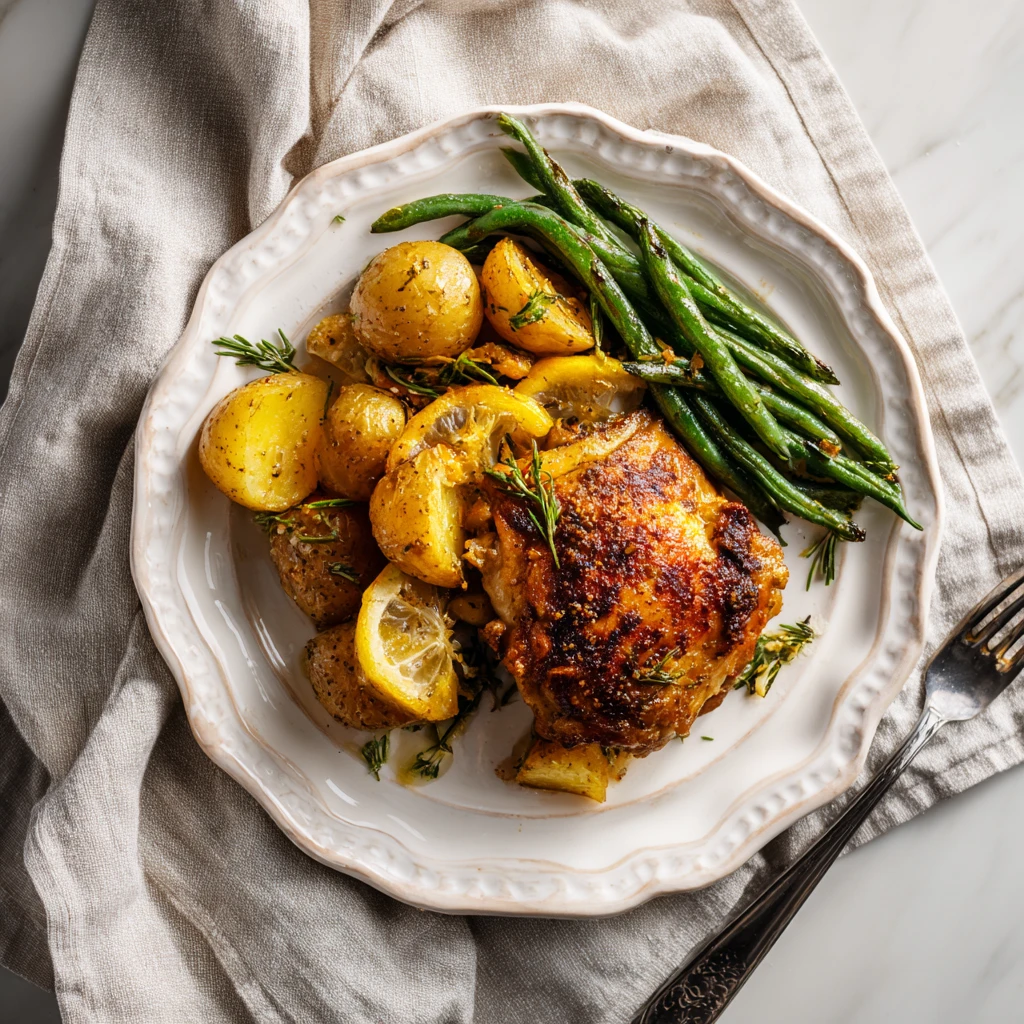
What is the function of a sheet pan in cooking?
A sheet pan provides a wide, flat surface that promotes even cooking and crisp texture. Its rimmed edges keep juices from spilling over, making it ideal for roasting, baking, or preparing complete sheet pan meals without mess
Why is a sheet pan the secret to make every meal easier than ever?
It simplifies cooking by letting you prep everything on one tray. Less mess, fewer dishes, and everything cooks together. That’s why sheet pan meals are a favorite for busy cooks—they cut both time and stress in half.
How long do you cook a sheet pan for?
Most sheet pan meals roast at 400°F for 25 to 35 minutes, depending on ingredients. Heartier vegetables and thicker proteins may need 40 minutes, while fish or shrimp cook in 15–20.
What other sheet pan recipes are there?
Think beyond dinner: sheet pan breakfasts like hash and eggs, roasted fruits for dessert, or even baked tofu and veggie trays. Explore comfort meals like our easy lasagna soup or refreshing leftovers like avocado shrimp salad, easily adapted to this method.
What size pan for sheet pan meals?
A half-sheet pan (18×13 inches) is best. It fits most ovens and offers enough space for proper roasting.
How do you use a sheet pan?
Line it (if needed), space ingredients evenly, and roast at the right temperature. Keep proteins and quick-cooking veggies on one side, denser items on the other. Rotate halfway for even results.
Conclusion
Sheet pan meals aren’t just about convenience—they’re about joy. They give you the freedom to cook real food, with real flavor, even when life is busy. Whether you’re building a simple salmon tray or turning leftovers into something new, your sheet pan is your kitchen’s most underrated hero.
If you’re ready to simplify your weeknight routine, grab a tray, open your fridge, and get roasting. The possibilities are endless—and the cleanup’s a breeze.
And for more recipes follw me in facebook.
Print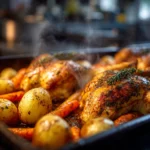
Sheet Pan Meals: The Ultimate Secret to Fast, Flavorful Dinners
Description
These easy sheet pan meals bring together protein, veggies, and flavor in a single tray—perfect for busy weeknights with minimal cleanup.
Ingredients
4 chicken thighs
1 lb baby potatoes, halved
2 cups green beans
2 tbsp olive oil
1 tsp garlic powder
1 tsp smoked paprika
Salt and pepper to taste
Instructions
1. Preheat oven to 400°F (200°C).
2. Place chicken, potatoes, and green beans on a sheet pan.
3. Drizzle with olive oil and sprinkle with seasonings.
4. Toss to coat, keeping everything in a single layer.
5. Roast for 35–40 minutes, flipping once halfway.
6. Remove when chicken is golden and veggies are tender.
Notes
Use parchment for easy cleanup.
Swap veggies based on season or preference.
Leftovers store well for up to 3 days.
